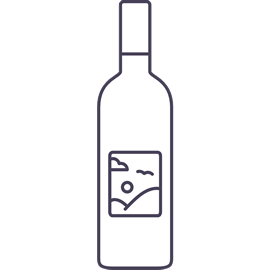
Over the last two decades, the wine industry in the country of Georgia has experienced enormous, unparalleled growth.
This ancient wine-making region is famed for its amber Qvevri wines and its semi-sweet reds such as Kindzmarauli. Although difficult to pronounce (“k-whe-air-vree” and “kinz-mah-rah-oo-lee”, for a start), they are becoming household names in countries all across the world.
In previous articles, we have explored the rich history of Georgian wine, some of the best bottles you can buy, and the wine boom in brief. Today, we will take a deeper look at the Georgian wine industry’s massive growth, and examine some of its key regions in detail, arming you with the right information to start enjoying Georgia’s best premium wines.
The Boom
Georgian wine’s incredible growth over the last 20 years is easy to illustrate, with a few numbers. In 2006, there were about 80 registered wineries in the entire country. Twelve years later, in 2018, the number of wineries had multiplied by twelve, to 961. In 2020, there were 1,575 wineries in the country. By taking the average yearly increase we can estimate that in 2023, there are roughly 2,400 registered wineries in Georgia.
This is still only a fraction of the number that you will find in countries such as Italy and France, but it’s an incredible increase nonetheless. It’s also fantastic news for Georgia as a whole, as wine exports make up a massive chunk of the country’s international trade. In the first half of 2023, wine comprised almost 9% of Georgia’s total exports - just behind copper ore.
In 2006, during a period of worsening relations between the two countries, Russia imposed an embargo on Georgian wine. Russia had historically been Georgian wine’s biggest buyer, so at the time, it may have seemed like a death sentence for the industry. However, Georgian wineries began to focus on the Ukrainian market instead, and looked even further afield, to the US, UK, Poland and Japan.
In short, the embargo proved to be a catalyst for Georgian wine’s long-term growth. To compete in these countries, wineries began to place more of an emphasis on quality. Slowly but surely, Georgian wine began to cement its reputation in far-flung places, earning new fans in America, Western Europe and Asia, rather than just the traditional markets of Ukraine and Russia.
Which Countries Buy Georgian Wine?

In 2013, Russia lifted the embargo on Georgian wine and re-established itself as the dominant shareholder in Georgian wine exports. As of 2022, 58% of Georgia’s still wine exports went to Russia.
So who are the biggest fans, outside of Georgia’s closest land neighbours? Across the Black Sea, it is Ukraine, which made up approximately 10% of share in Georgian wine exports - at least before the Russian invasion of Ukraine in February 2022. As of 2021, Eastern EU countries (Such as Poland and the Baltics) accounted for 10% as well, CIS countries (such as Kazakhstan and Belarus) made up another 10%, while China trailed slightly behind with 7%.
In Western Europe, the biggest buyer of Georgian wine was Germany. However, Georgian wine has proven to be a massive hit in the United Kingdom - even Queen Elizabeth was known to enjoy a Saperavi blend, crafted by the Moldovan winery Chateau Purcari. The UK has been one of the highest risers in recent years, with a 50% year-on-year growth rate, followed by China and Poland with an increase of approximately 23% each.
Georgia’s location and the importance of exports make it particularly vulnerable to political and economic crises - most recently, the Russian invasion of Ukraine. Wine exports to Ukraine, Georgia’s second-largest buyer, dropped to almost zero in the second quarter of 2022. Year-on-year growth of wine export to Russia had also dropped slightly by the middle of 2022. However, experts predict that the export situation to both countries will stabilise by the end of 2024. Expansion into other markets, such as the UK, Japan and the US has also aided the Georgian wine industry massively and has partially curbed the losses incurred by the Russian invasion.
Semi-sweet Reds Lead The Charge
In terms of the styles of wine being exported, semi-sweet reds make up the lion’s share, with almost 50% of total litres exported. They’re followed by dry reds such as Saperavi with roughly 20%, while the remaining portion is made up of an assortment of white and amber wines.
If you’re reading this, you may also be interested in tasting some Georgian wine. On the 8Wines website, we offer a carefully curated range of premium Georgian wines. To find out why semi-sweet reds lead the pack, we recommend this excellent Khvanchkara, made by Marani in the region of Kakheti.
Marani has been making wine in the Alazani River Valley for a century. They distribute worldwide and are certainly one of Georgia’s large-scale producers. Under the leadership of Chief Winemaker Beqa Sozashvili, who has worked for the winery since it was still called “Telavi Wine Cellar”, they craft wines of impeccable quality. Marani is definitely a name worth keeping in mind in your search for Georgian wine.
Saperavi is the country’s flagship grape, usually used to make bold, complex reds that can contend with the likes of Bordeaux and Rioja. Our Saperavi tasting case is a perfect introduction to this grape, best paired with meaty dishes such as shashlik, or a reliable steak.
To fully understand Georgia’s unique approach to wine-making, amber/orange wines are also a must-try. Our Orange Wine tasting case is a great place to start, offering a combination of Qvevri and non-Qvevri fermented amber wines. A note for the uninitiated: the Qvevri method is the traditional way to make Georgian wine, where grapes are buried underneath the ground in clay amphoras. Prolonged contact between the grape juice and grape skin imparts a beautiful amber colour, an extra hit of tannins, and complex flavours. Finally, to try out an example of the pure, elegant white wines that make up about 10% of Georgia’s wine exports, we recommend this Mtsvane, made by Winiveria. It is a classic white with notes of stone fruit and lemon, asking to be paired with seafood or vegetarian dishes. While we have discussed the importance of exports, domestic consumption made up 24% of the Georgian wine industry’s total revenue in 2021. Domestic consumption is closely linked to Georgia’s wine tourism, a fact that became apparent during the COVID-19 pandemic. Overall wine consumption within Georgia declined by 43% in 2020 but has been steadily building from 2021 onwards. Wine is a vital part of Georgian gastronomy and culture. It is the most popular alcoholic drink in Georgian households, making up a whopping 87% of total domestic alcohol consumption, in 2021. Despite the effects of the Russian invasion of Ukraine, COVID-19, and the decline in alcohol consumption, Georgian wine has been a juggernaut over the last few years, careering into the minds and hearts of the wine-loving public. Throughout 2023, premium Georgian wines have appeared at international exhibitions such as VinExpo Paris, ProWein, the London Wine Fair, and Foodex Japan. Georgian wine has also started popping up in Michelin-star restaurants across the globe. Arzak, a 3-star restaurant in the city of San Sebastián, in the Basque region, has several Georgian wines on its menu. On the French Riviera, another 3-star restaurant named Le Mirazur offers a selection of wines from Tsinandali Estate, Shalauri Wine Cellar, Solomnishvili Winery and Winiveria. If you have ever been curious about what the wine served at a 3-star Michelin restaurant tastes like, we also offer wines from Solomnishvili and Winiveria. Solomnishvili’s Saperavi #22 is a red Qvevri wine, with a luscious nose of blackberry and prunes. It can be paired with gamey meats, or kept in your cellar for 10 years or more. Winiveria’s Saperavi hammers home our paradoxical point: Premium Georgian wines don’t have to cost a fortune. This is a 92-rated wine, with an incredibly concentrated character and a bouquet of dark fruits. It’s ideal for pairing with roasted lamb or succulent sausages. Kakheti is Georgia’s wine-making powerhouse, containing 20 of the 29 PDO appellations that you can visit in the country. Much of the prime wine-growing land is split between two valleys - The Alazani Valley, flanked by the Caucasus mountains to the north and the Gombori range to the south, and the Iori Valley, situated south of the Gombori mountains. Kakheti is famed for its bold, full-bodied Saperavi reds, but white or orange wine made from Rkatsiteli is even more common. Earlier in the article, we mentioned Marani, an excellent Kakheti cellar that distributes its wines worldwide. At the other end of the scale, you have small, family-run, boutique wineries. Here are a couple of our niche favourites from the Kakheti region, for you to explore. Tchotiashvili Family Winery can be found on the right bank of the Lopota River, in the small village of Saniore, which is also a designated microzone. It is run by two brothers, Kakha and Ucha Tchotiashvili, who own 12 hectares of vineyards, planted approximately 450 metres above sea level. Among their vineyards, you can discover a lot of Rkatsiteli and Saperavi, rarer Georgian varietals such as Chitistvala and Grdzelmtevana, along with Montepulciano and Shiraz. Our recommendation from Tchotiashvili is their Rkatsiteli Reserve. It’s a bright amber wine, with the vigorous acidity and apricot notes of a sharp white, and the full-bodied, nutty texture of something more complex. Papari Valley is located in the PDO appellation of Akhasheni, on the forested slopes that run down from the Gombori mountains. It is a family business, making wine in the traditional Kakhetian method with Qvevri, with some intriguing modern twists. For the most part, those at Papari Valley use Rkatsiteli and Saperavi grapes for their wines. The PDO laws of Akhasheni define Akhasheni wine as a semi-sweet red, made from Saperavi, falling between 10.5-12% alcohol. Therefore, our recommendation from Papari, the 3 Qvevri Terraces Saperavi, is far too potent to be labelled as an Akhasheni wine, despite fitting the mould in every other way. It is a rich, sapid and incredibly dark wine, bordering on black. It contains 16% ABV and is probably unlike any European wine you’ve tried before. It’s a great wine for pairing with candied nuts, fruitcake, or meat with a slightly sweet sauce. Although it is far smaller than Kakheti, the region of Kvemo Kartli, which contains the PDOs of Bolnisi and Asureti, is beginning to rival Kakheti in terms of quality. It is located south of the capital city Tbilisi and is home to archaeological sites where the oldest evidence of wine-making in the world was discovered. Chinuri, Rkatsiteli and Saperavi are the most popular grapes here, as well as some rarer examples of Riesling, brought by German colonists in the 19th century. For wine lovers looking to delve into Georgia’s ancient wine-making history, Kvemo Kartli is an essential trip. In the last two decades, Georgia's wine industry has grown considerably as a result of market diversification and quality enhancement. Significant challenges have led to resilience, and ancient tradition has formed the basis for some incredible creativity. Georgian wines continue to attract global audiences and are likely to garner ever more fans in the near future, proving that traditional, grassroots winemaking practices can still appeal to wine lovers across the world.From Georgian Tables to Michelin Stars

Regions and Wineries to Explore

Spotlight on Kakheti
Spotlight on Bolnisi/Asureti
Conclusion




















great service , quick delivery . definitely buying again